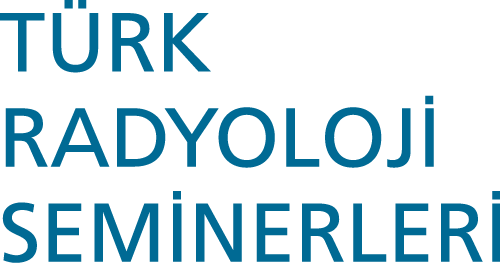ABSTRACT
Mastitis is a benign inflammatory disease of the breast and usually occurs in the 2nd-4th decade in women of reproductive age. The most common types encountered in clinical practice are lactational mastitis and idiopathic granulomatous mastitis (IGM). Autoimmune mastitis, periductal mastitis, radiation-associated mastitis, silicone implant-associated mastitis, xanthogranulomatous mastitis and eosinophilic mastitis, which are included in the definition of non-IGM non-infectious mastitis, are rare inflammatory conditions. Autoimmune mastitis is a group of heterogeneous diseases with different pathophysiological processes that occur when systemic autoimmune diseases rarely affect the breast secondarily. The main types of autoimmune mastitis are diabetic mastitis associated with organ-specific autoimmunity; connective tissue diseases such as systemic lupus erythematosus, Schögren’s-associated mastitis; vasculitic diseases such as eosinophilic granulomatosis, granulomatosis with polyangiitis-associated mastitis; secondary breast involvement in systemic granulomatous diseases such as sarcoidosis and Crohn’s disease, and immunoglobulin G4-related breast involvement that forms pseudotumoral masses in many different anatomical locations in the body. In particular, autoimmune mastitis, although the pathophysiological processes are different, basically results in lymphocytic infiltration; diagnosis is made by tissue biopsy in Breast Imaging Reporting and Data Systems 4 and 5 categories with imaging findings such as hypoechoic mass with irregular borders on ultrasound, asymmetric irregular/spiculated opacities on mammography, heterogeneous mass or nonmass on MRI and sometimes causing wash-out on dynamic examination.
Keywords:
Mastitis, autoimmune mastitis, lymphocytic mastitis, sclerosing lymphocytic lobulitis, diabetic mastitis, systemic lupus erythematosus, periductal mastitis, ductal ectasia, radiation mastitis, silicone associated mastitis, xanthogranulomatous mastitis, eosinophilic mastitis
References
1Chinyama CN. “Benign breast diseases, radiology, pathology, risk assessment,” 2004.
2Yilmaz R, Yesil S, Bayramoglu Z, Ozkurt E, Acunas G. Lymphocytic mastopathy: mimicker of breast malignancy. Breast J 2017; 23: 229-31.
3Tomaszewski JE, Brooks JS, Hicks D, Livolsi VA. Diabetic mastopathy: a distinctive clinicopathologic entity. Hum Pathol 1992; 23: 780-6.
4Miura K, Teruya C, Hatsuko N, Ogura H. Autoantibody with cross-reactivity between insulin and ductal cells may cause diabetic mastopathy: a case study. Case Rep Med 2012; 2012: 569040.
5Chen XX, Shao SJ, Wan H. Diabetic mastopathy in an elderly woman misdiagnosed as breast cancer: a case report and review of the literature. World J Clin Cases 2021; 9: 3458-65.
6Boumarah DN, AlSinan AS, AlMaher EM, Mashhour M, AlDuhileb M. Diabetic mastopathy: a rare clinicopathologic entity with considerable autoimmune potential. Int J Surg Case Rep 2022; 95: 107151.
7Goulabchand R, Hafidi A, Van de Perre P, Millet I, Maria ATJ, Morel J, et al. Mastitis in autoimmune diseases: review of the literature, diagnostic pathway, and pathophysiological key players. J Clin Med 2020; 9: 958.
8Kudva YC, Reynolds CA, O’Brien T, Crotty TB. Mastopathy and diabetes. Curr Diab Rep 2003; 3: 56-9.
9Sabaté JM, Clotet M, Gómez A, De Las Heras P, Torrubia S, Salinas T. Radiologic evaluation of uncommon inflammatory and reactive breast disorders. Radiographics 2005; 25: 411-24.
10Moschetta M, Telegrafo M, Triggiani V, Rella L, Cornacchia I, Serio G. et al, Diabetic mastopathy: a diagnostic challenge in breast sonography. J Clin Ultrasound 2015; 43: 113-7.
11Rajasundaram S, Vijayakumar V, Chegu D, Uday Prasad PV, Vimalathithan SN, Saravanan S. et al. “Diabetic mastopathy-an uncommon presentation of a common disease. Breast J 2020; 26: 1409-11.
12Woodard GA, Bhatt AA, Knavel EM, Hunt KN. Mastitis and more: a pictorial review of the red, Swollen, and painful breast. Journal of Breast Imaging 2021; 3: 113-23.
13[Wood E, Propeck P. Atypical sonographic presentation of diabetic mastopathy: a case report and literature review. J Clin Imaging Sci 2021; 11: 60.
14Mosier AD, Boldt B, Keylock J, Smith DV, Graham J. Serial MR findings and comprehensive review of bilateral lupus mastitis with an additional case report. J Radiol Case Rep 2013; 7 48-58.
15Tuncbilek N, Karakas HM, Okten O. Diabetic fibrous mastopathy: dynamic contrast-enhanced magnetic resonance imaging findings. Breast J 2004; 10: 359-62.
16Nasu H, Ikeda A, Ogura H, Teruya C, Koizumi K, Kinoshita M, et al. Two cases of diabetic mastopathy: MR imaging and pathological correlation. Breast Cancer 2015; 22: 552-6.
17[Guzik P, Gęca T, Topolewski P, Harpula M, Pirowski W, Koziełek K, et al. Diabetic Mastopathy. Review of diagnostic methods and therapeutic options. Int J Environ Res Public Health 2021; 19: 448.
18Isomoto I, Wada T, Abe K, Uetani M. Diagnostic utility of diffusion-weighted magnetic resonance imaging in diabetic mastopathy. Clin Imaging 2009; 33: 146-9.
19Alkhudairi SS, Abdullah MM, Alselais AG. Diabetic mastopathy in a patient with high risk of breast carcinoma: a management dilemma. Cureus 2020; 12: e7003.
20Lee SJ, Saidian L, Wahab RA, Khan S, Mahoney MC. The evolving imaging features of lupus mastitis. Breast J 2019; 25: 753-4.
21Rosa M, Mohammadi A. Lupus mastitis: a review. Ann Diagn Pathol 2013; 17: 230-3.
22Summers TA Jr, Lehman MB, Barner R, Royer MC. Lupus mastitis: a clinicopathologic review and addition of a case. Adv Anat Pathol 2009; 16: 56-61.
23Oktay A, Esmat HA, Aslan Ö, Mirzafarli I. Lupus mastitis in a young female mimicking a breast carcinoma; a rare entity through a case report and review of the literature. Eur J Breast Health 2021; 18: 13-5.
24Fernández-Torres R, Sacristán F, Del Pozo J, Martínez W, Albaina L, Mazaira M, et al. Lupus mastitis, a mimicker of erysipelatoides breast carcinoma. J Am Acad Dermatol 2009; 60: 1074-6.
25Sabaté JM, Gómez A, Torrubia S, Salinas T, Clotet M, Lerma E. Lupus panniculitis involving the breast. Eur Radiol 2006; 16: 53-6.
26Bayar S, Dusunceli E, Ceyhan K, Unal E, Turgay M. Lupus mastitis is not a surgical disease. Breast J 2007; 13: 187-8.
27“schögren otoimmün epitelitis”.
28Kriegsmann M, Gomez C, Heil J, Schäfgen B, Gutjahr E, Kommoss FKF, et al. IgG4-related sclerosing mastitis in a 49-year-old patient with multiple, tumor-like nodules-diagnostic accuracy of core needle biopsy. Breast J 2019; 25: 1251-3.
29Villalba-Nuño V, Sabaté JM, Gómez A, Vidaller A, Català I, Escobedo A, et al. Churg-Strauss syndrome involving the breast: a rare cause of eosinophilic mastitis. Eur Radiol 2002; 12: 646-9.
30Reis J, Boavida J, Bahrami N, Lyngra M, Geitung JT. Breast sarcoidosis: clinical features, imaging, and histological findings. Breast J 2021; 27: 44-7.
31Doan T, Nguyen NT, He J, Nguyen QD. Sarcoidosis Presenting in breast ımaging clinic with unilateral axillary lymphadenopathy. Cureus 2021; 13: e13245.
32Ladefoged K, Balslev E, Jemec GB. Crohn’s disease presenting as a breast abscess: a case report. J Eur Acad Dermatol Venereol 2001; 15: 343-5.
33Ramalingam K, Srivastava A, Vuthaluru S, Dhar A, Chaudhry R. Duct ectasia and periductal mastitis in Indian women. Indian J Surg 2015; 77(Suppl 3): 957-62.
34Zhang Y, Zhou Y, Mao F, Guan J, Sun Q. Clinical characteristics, classification and surgical treatment of periductal mastitis. J Thorac Dis 2018; 10: 2420-7.
35Plaxco J S, Winston E. Imaging and clinical presentation of Zuska’s disease. J Breast Imaging 2021: 3: pp. 632-3.
36Xu H, Liu R, Lv Y, Fan Z, Mu W, Yang Q, et al. Treatments for Periductal mastitis: systematic review and meta-analysis. Breast Care (Basel) 2022; 17: 55-62.
37Yi A, Kim HH, Shin HJ, Huh MO, Ahn SD, Seo BK. Radiation-induced complications after breast cancer radiation therapy: a pictorial review of multimodality imaging findings. Korean J Radiol 2009; 10: 496-507.
38Krishnamurthy R, Whitman G J, Stelling C B, Kushwaha A C. Mammographic findings after breast conservation therapy. Radiographics 1999; (suppl 1): S53-S63.
39Rajgor AD, Mentias Y, Stafford F. Silicone granuloma: a cause of cervical lymphadenopathy following breast implantation. BMJ Case Rep 2021; 14: e239395.
40Caskey CI, Berg WA, Hamper UM, Sheth S, Chang BW, Anderson ND. Imaging spectrum of extracapsular silicone: correlation of US, MR imaging, mammographic, and histopathologic findings. Radiographics 1999; 19: S39-51; quiz S261-2.
41Berg WA, Caskey CI, Hamper UM, Anderson ND, Chang BW, Sheth S, et al. Diagnosing breast implant rupture with MR imaging, US, and mammography. Radiographics 1993; 13: 1323-36.
42Echo A, Otake LR, Mehrara BJ, Kraneburg UM, Agrawal N, Da Lio AL, et al. Surgical management of silicone mastitis: case series and review of the literature. Aesthetic Plast Surg 2013; 37: 738-45.
43Koo JS, Jung W. Xanthogranulomatous mastitis: clinicopathology and pathological implications. Pathol Int 2009; 59: 234-40.
44Adams EG, Kemp JD, Holcomb KZ, Sperling LC. Xanthogranulomatous reaction to a ruptured galactocele. J Cutan Pathol 2010; 37: 973-6.
45Jeziorska M, Hassan A, Mackness MI, Woolley DE, Tullo AB, Lucas GS, et al. Clinical, biochemical, and immunohistochemical features of necrobiotic xanthogranulomatosis. J Clin Pathol 2003; 56: 64-8.
46Kapoor H, Zhang Y, Qasem SA, Owen W, Szabunio MM. Xantho-granulomatous mastitis preceded by cysts on ultrasound: Two cases with review of literature. Clin Imaging 2021; 78: 64-8.
47Lee YM, Gupta A, Gu J, Lee N. Role of conservative therapy prior to surgery in xanthogranulomatous mastitis: a case report. Ann Transl Med 2022; 10: 1288.
48Arnott W, Leong G, Davis A, Diab J, Clement Z. Eosinophilic mastitis: a rare benign inflammatory condition and review of the literature. J Surg Case Rep 2022; 2022: rjac456.
49Komenaka IK, Schnabel FR, Cohen JA, Saqi A, Mercado C, Horowitz E, et al. Recurrent eosinophilic mastitis. Am Surg 2003; 69: 620-3.
50Takahashi K. A very rare case of eosinophilic mastitis. Int J Surg Case Rep 2018; 49: 251-4.
51Nguyen MT, Shukla SS, Kendziora RW, Solanki MH, Bhatt AA. Eosinophilic mastitis mimicking a developing asymmetry. Radiol Case Rep 2022; 18: 689-92.
52Garg M, Kumar S, Neogi S. Eosinophilic mastitis masquerading as breast carcinoma. J Surg Case Rep 2012; 2012: 1.
53Bajad S, Bajaj R, Tanna D, Bindroo M, Kaur K, Gupta R, Eosinophilic mastitis: a chameleon disease in rheumatologists’ domain. Indian J Rheumatol 2019; 14: pp. 241-3.
54Parakh A, Arora J, Srivastava S, Goel RK. Isolated eosinophilic infiltration of the breast. Indian J Radiol Imaging 2016; 26: 383-5.



